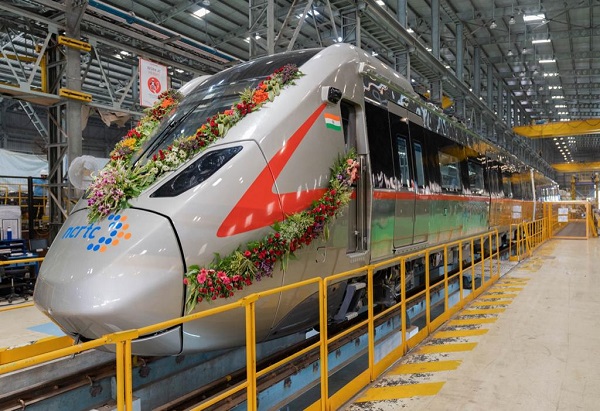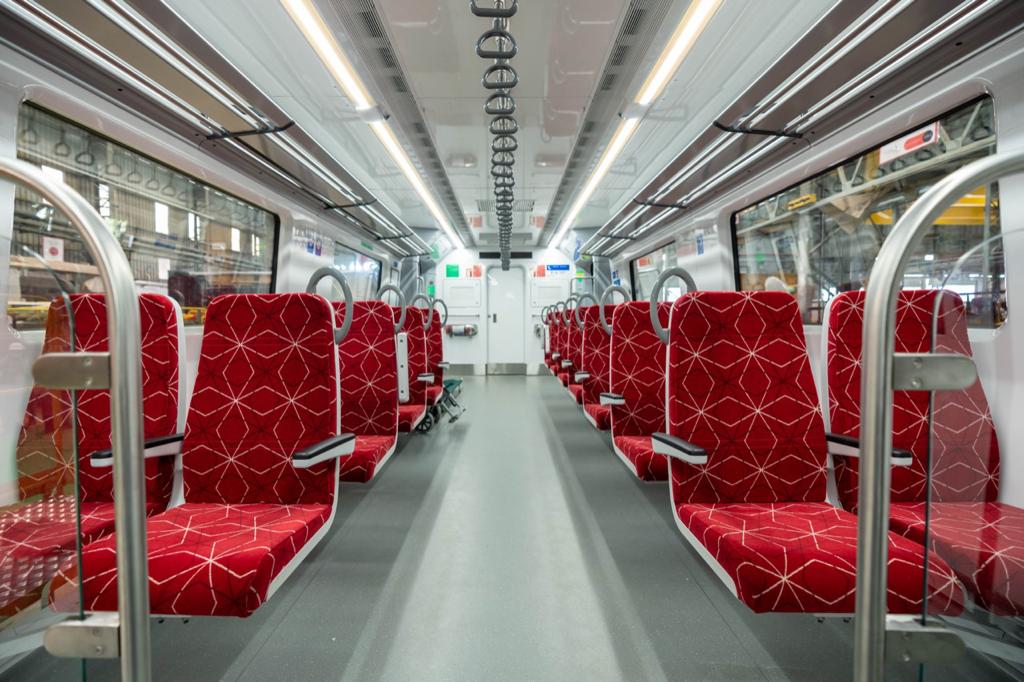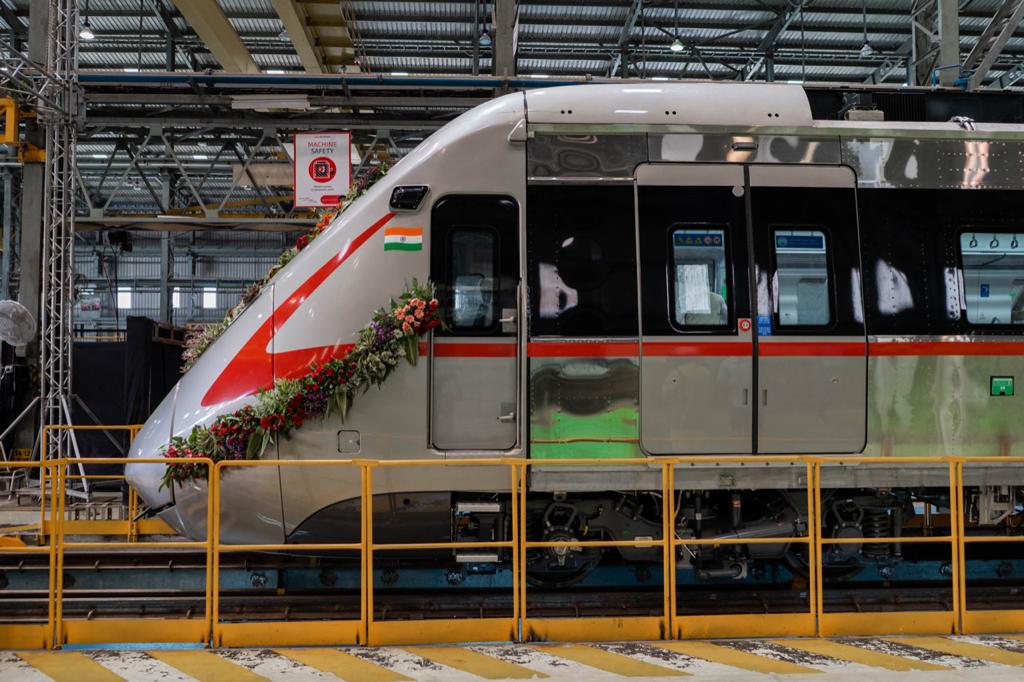Alstom Rolls Out 1st Delhi – Meerut RRTS Train
Alstom Transport on Saturday rolled out India’s first of 30 semi high-speed regional trains for National Capital Region Transport Corporation’s (NCRTC) 82.5 km Delhi – Ghaziabad – Meerut RRTS project.
The aerodynamic train has a stainless steel body with a design speed of 180 kmph. It is planned to be operated at a speed of 160 kmph and average speed of 100 kmph to reduce the travel time between Delhi and Meerut by 40%.
The train was designed at Alstom’s Hyderabad Engineering Centre, and manufactured in Maneja, Gujarat (systems & electrical) and Savli, Gujarat – the location of the event. Alstom claims the trains are 100% indigenous in line with the government’s Make in India programme and Aatmanirbhar Bharat’s ambition.

Event Video
Alstom began manufacturing coaches in mid-2021 after Bombardier was awarded a Rs. 2577 crore contract in May 2020. The train-sets’ highly-impressive final design was unveiled in September 2020.

The train’s basic body shell got ready in February 2022.

Amazing additional images from the event can be viewed here.
Alstom will supply NCRTC with a total of 210 standard gauge aerodynamic lightweight coaches – 180 for long distance travel and 30 for local Meerut Metro MRTS services with 15 years of maintenance. NCRTC has the option to procure an additional 90 coaches and two years of maintenance to go with it.
Out of the 210 coaches being procured, 180 coaches (30 train-sets of 6 coaches) will be used for long-distance end-to-end services from Delhi’s Sarai Kale Khan Station to Modipuram Station – view route map.
The rest 30 coaches will run as 10 trains in a configuration of 3 cars (see design) for servicing the Meerut Metro project with dedicated metro-only stations roughly every kilometer.
As shared in another post, the train is expected to arrive at Duhai Depot by month-end and NCRTC hopes to start trial runs by the end of the year. That of course depends on the completion of Package 2’s viaduct by APCO – CRFG JV, station and systems work along the way.
For more updates, check out the RRTS section or my Home Page! Sign up for free instant email notifications on new posts over here. Like this post? See how you can get early-access to updates and support the site over here.
– TMRG




As this event unfolded (rolling out of 1st trainset), do you now feel confident of opening of the priority corridor by Q1/Q2 2023?
OR
would you still maintain your estimate of priority section opening by 2024-end?
https://www.youtube.com/watch?v=0AKbV6KmoDE
NCRTC’s MD goes on record saying that GOI has asked them to commission the priority section by June ’23; but they will do so by/before March ’23..
well, can’t rely on an Indian Babu’s words; they are notorious liars..
The viaduct civil works seems to be progressing well. How about tracks, signaling, station finishing etc.??
You can see videos of RSLive on you tube. He covers the project updates frequently. The pace of work seems to be good.
His last drone video is nice. Link: https://www.youtube.com/watch?v=RiITYFQUoT8
I don’t have progress / status numbers, but a March 2023 opening is impossible. Civil work at stations is pending throughout. Architectural finishing hasn’t started. Train testing is another ball game.
Closer to March, we’ll hear about it “starting soon” and “minor work is pending”. We’ll likely see a late-2023 opening.
Hii TMRG, any update about D2 package of bullet train…? Technical bids for it were supposed to be opened on 5th May…
Hi – haven’t heard anything on that. Will post when I do!
I believe Delhi-Merrut is too short route for RRTS, from utility perspective. Atleast, it should cover a minimum of 200 km, for example Delhi-Kurukshetra or Delhi-Chandigarh, Delhi-Haridwar, Delhi-Agra could be more practical and profitable.
Station gap should not be less than 20-25 km for such routes, so that semi-high speed (180 kmph) fruits could be reaped.
22 stations means train will start and stop 21 times, each start/stop will take 2 min which makes 21 stations X 4min = 84 min.
And 1 min per station stopping time.
It makes 84 + 22 min = 106min.
This short (average) distance of 4km will increase maintenance cost too high and also its operational cost will never allow recovery of even ticket cost.
Practically it will take more than 2 hours to complete this journey and maybe after 5 years (from start of operation) this line will stop functioning.
And they are spending 30,600 crores on it.